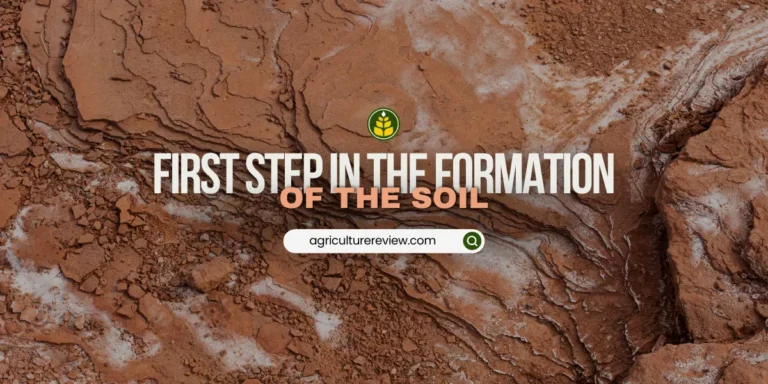Are you excited to know about Cabbage farming. If yes then you are on the right page. In this article एग्रीकल्चर रिव्यू will guide you about everything that you need to know about cabbage farming.
Whether you are a student or a farmer, this article on cultivation of cabbage is going to add knowledge and wisdom on cabbage farming.
This article contains botanical description, sowing time, seed rate, origin, geographical distribution, field preparation, fertilizers, irrigation, weeding, harvesting time and method, etc.
Table of Contents
Botanical classification of Cabbage
Botanical name of cabbage: Brassica oleracia var. capitata
परिवार: ब्रैसिसेकी
गण: Brassicales
गुणसूत्र संख्या: 2n= 18
Cabbage Farming Guide
You need to know all these important points on cabbage farming to get successful in the cultivation of cabbage. Therefore, do not miss any of these points. And at the end of the article you can leave your queries and confusions as comments.
Cabbage is a biennial plant that is grown as an annual vegetable crop. The dense leafy head portion is of value. It can be of green, purple, or white in colour. And is a good source of dietary fibres, Vitamin-C, and Vitamin-K.
Origin and Geographical Distribution
Origin of cabbage is believed to be in Europe. Cultivation began before 1000 BC. However, exact origin of cabbage is still not confirmed.
Later on, cultivation practice spread across the globe. Varieties evolved according to the new environment factors. At present, cabbage is cultivated in China, India, Ukraine, Indonesia, Japan, Poland, etc.
There are nearly 150 countries where cabbage is cultivated.
- चीन is leading in cabbage production. It produces 33,881,515 tonnes of cabbage per year. This is followed by India, Russia, and South Korea.
- भारत produces 8,755,000 tonnes of cabbage per year. Average yield of China is 34,000 Kg./hectare.

मिट्टी की आवश्यकता
Sandy to heavy soil rich in organic matter is ideal for cabbage farming. Soil pH range of 6.0 to 6.5 is considered good for the cultivation. However, growth of crop is different in heavy to light soil. Early sown variety loves light soil.
While late sown crop loves heavy soil in which the growth is slow. Although, saline soil should be avoided for cabbage production. Well drained, loamy soil rich in organic matter that can hold moisture is best.
Climate, Temperature & Rainfall
Cabbage crop likes cool climate. The ideal temperature range for cabbage farming is 12 to 30 degree Celsius. For sowing, temperature in the range of 24 to 30 degree is good. Moreover, moist climate is beneficial.
Annual rainfall of 600 mm is appropriate. Relative humidity of about 90% will help in cultivation of cabbage.
प्रसार के तरीके
For propagation, few steps are very important. These are nursery bed preparation, sowing time और rate, sowing methods और care.
Seed Rate of Cabbage: For growing cabbage in one hectare of land, 300 to 500 grams of seeds/ hectare are adequate. Moreover, it also depends from variety to variety. Likewise, planting season varies according to variety, climatic conditions and other factors.
Sowing of seeds can be done from July to November in tropical areas. Likewise, in temperate or hilly region, sowing of seeds can be done during spring to summer season.
Nursery Seed Bed Preparation
The first step for the cultivation of cabbage crop after selecting the variety is nursery seed bed preparation. Preparation of seedling is beneficial as it will reduce the cost of purchasing saplings from the market.
However, for sowing seeds you can prepare raised beds. Raised bed can be of 10 to 15 centimetres in height and 3 x 0.5 metres in size. Keep near about 70 centimetres of gap between two beds. This is necessary for the application of water, weeding, and management.
While preparing seed bed you can add Farm Yard Manure or any Bulky Organic Manure @2 to 4 Kilograms per metre. You can also try Ghanjeevamrut for this purpose. Construct good drainage facility to remove excess water from the field.
Waterlogging condition can damage your seeds. Although, before sowing you can drench of the bed with Bavistin. You can apply Bavistin @10 to 20 grams in one litre of water. This will help to prevent damping off disease.
बीज बोना
Before sowing, treat seeds with Thiram @3g per Kilogram of seed. It will prevent damping off disease. Moreover, you can also treat seeds with fungal culture of Trichoderma viride @4grams per kilogram of seed.
You can do line sowing by keeping 5 to 7 centimetres distance between seeds. Although, the depth for sowing seeds can be 1 to 2 centimetres. Irrigate the sown area with appropriate amount of water after sowing.
A layer of dry straw mulch can be applied after sowing. It will help to prevent moisture and maintain adequate temperature for germination.
Once the seeds sprout, then you can remove the mulch layer immediately. After 4 to 6 weeks of sowing, seedlings will become ready to be transplanted.
Land Preparation for Cabbage Farming
Start preparation of land for transplantation by ploughing. Four to five ploughing is enough. Although, you can give interval between two ploughing. For levelling of the land you can do planking. Transplantation can be done in three type of system.
First is on flat beds, this is suitable for dry areas that receives less amount of rainfall. Furrows can be constructed for transplantation in areas having saline soil. If there is no shortage of rainfall during transplantation, then you can adopt ridge method.
Method of Planting and Spacing
The distance or spacing is mainly dependent on three factors, that are variety selected, soil condition and planting season. Although, you can adopt this spacing recommendation that is dependent on maturity of the variety.
For Early Maturing Variety: 45 x 45 centimetres
Mid Maturing Variety: 60 x 45 centimetres
Late Maturing Variety: 60 x 60 centimetres
However, you can try to find suitable planting distance on the basis of three factors. Dip the roots of seedlings in Bavistin @2gram per litre of water before transplanting. Moreover, irrigate the field immediately after transplantation.
Irrigation for Cabbage farming
Cabbage crop loves moist soil but do not apply water in excess during crop maturity. Immediately after transplantation you can irrigate your field. After first irrigation, you can irrigate your field in the interval of 15 to 20 days. Irrigation frequency depends on soil and climate conditions.
However, at the time of maturity avoid applying excess of water. Excess water can cause head splitting during maturity. But juvenile stage requires good amount of watering.
खाद और उर्वरक
In one acre of land you can apply 30 to 40 tonnes of Farm Yard Manure or any Bulky organic manure. Along with this you can add.
Nitrogen: 50 Kilograms, Phosphorus: 25 Kilograms, Potash: 25 Kilograms, Single superphosphate: 155 Kilograms, Muriate of Potash: 40 Kilogram. Add half doze of NPK and complete doze of FYM two weeks before transplantation.
However, SSP and MOP should be applied completely. Apply rest amount of fertilize after six weeks of transplantation. You can also apply this rest amount of fertilizer at the time of earthing up.
For organic farming, many farmers have started using waste decomposer. You can also learn more about waste decomposer by visiting the link below.
और पढ़ें: WASTE DECOMPOSER: USES AND BENEFITS
निराई और गुड़ाई
Weeding is an intercultural operation. Weed growth can seriously damage the overall yield. You can apply Pre-emergence herbicide, i.e., Nitrofen @ 2 Kilogram per hectare. You can also practice earthing up after 30 days from transplantation.
Moreover, you can do 1 to 2 hoeing and practice hand weeding. This will help to keep the crop free from weeds.
Harvesting and Yield
You can start harvesting the crop 90 to 120 days after transplantation. Delayed or early harvest, both are not beneficial. However, you can start harvesting when the heads are firm and mature.
Yield of cabbage crop varies. It depends on variety selected, climate, sowing time, and other factors. Early variety on an average can give yield up to 25 to 30 t/hectare. Late variety can give yield up to 40 to 60 t/hectare.





